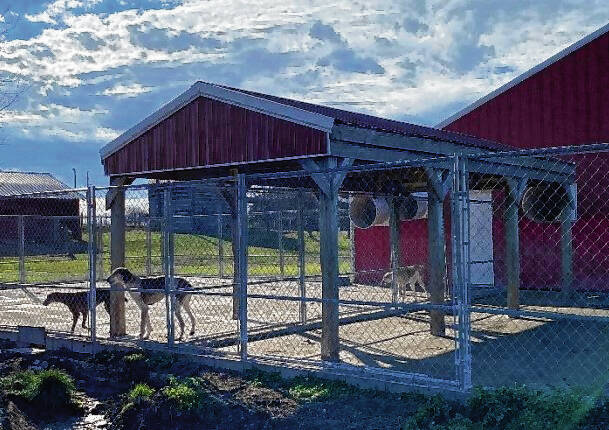
The Indiana State Board of Animal Health completed an investigation into The Veterinarian’s Blood Bank in Vallonia after PETA made claims of neglect to health and management of the animals. This is one of the outdoor exercise areas of the dog facility at the blood bank.
IBOAH | Dr. Jodi Lovejoy
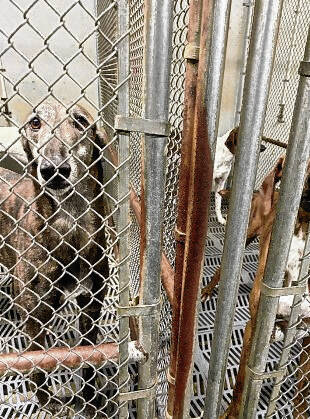
One of the primary enclosures at The Veterinarian’s Blood Bank in Vallonia. The state veterinarian noted areas of rust on portions of the kennels but no sharp edges or jagged points.
IBOAH | Dr. Jodi Lovejoy
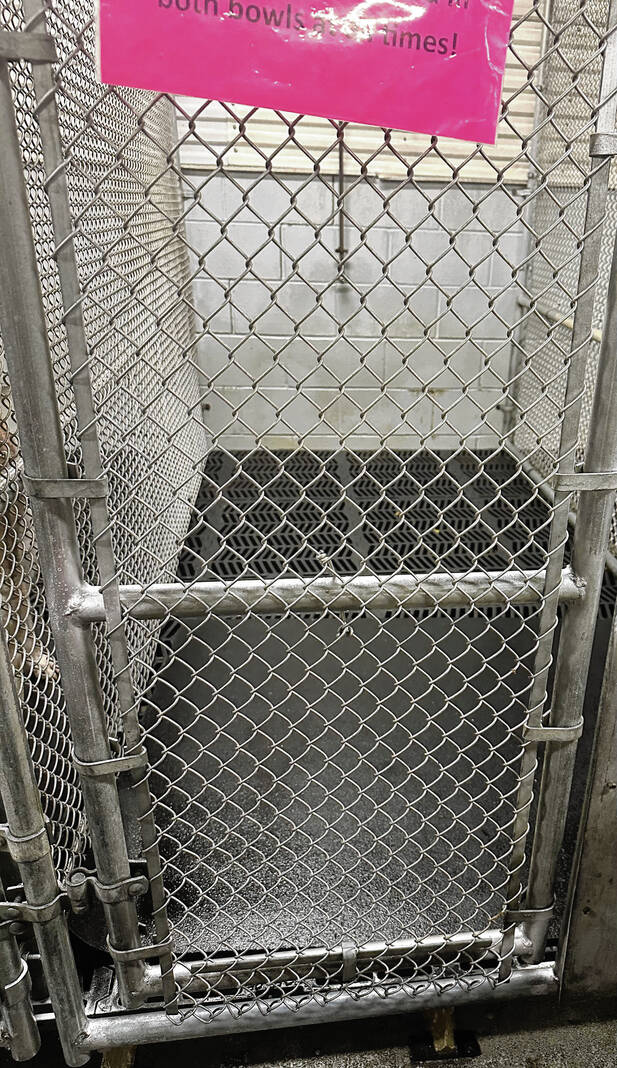
Since the inspection, veterinarian and co-owner of the blood bank Darren Bryant said staff has worked to seal the areas of rust on the dogs’ enclosures and also replace some of the kennels. Solid surface flooring also has been provided in the pens since the inspection.
Veterinarian’s Blood Bank | Ashley Rogers
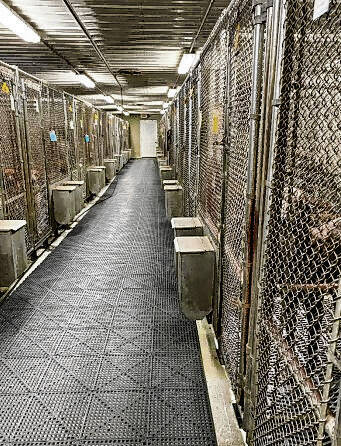
One of the kennel rooms at The Veterinarian’s Blood Bank. Two dogs are housed in each pen with water and food available.
IBOAH | Dr. Jodi Lovejoy
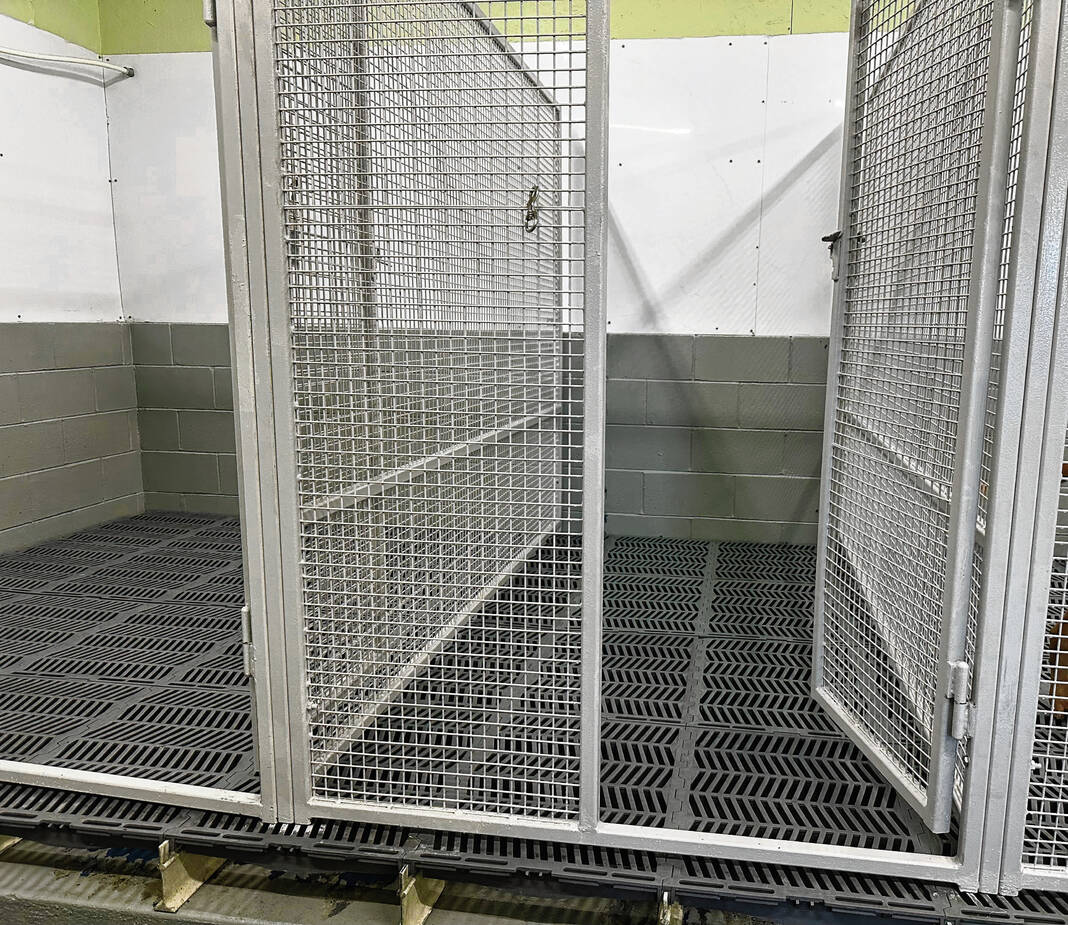
Some of the kennels have been replaced with new ones at the facility. Staff repairs the kennels while the animals are in the outside exercise pens.
Veterinarian’s Blood Bank | Ashley Rogers
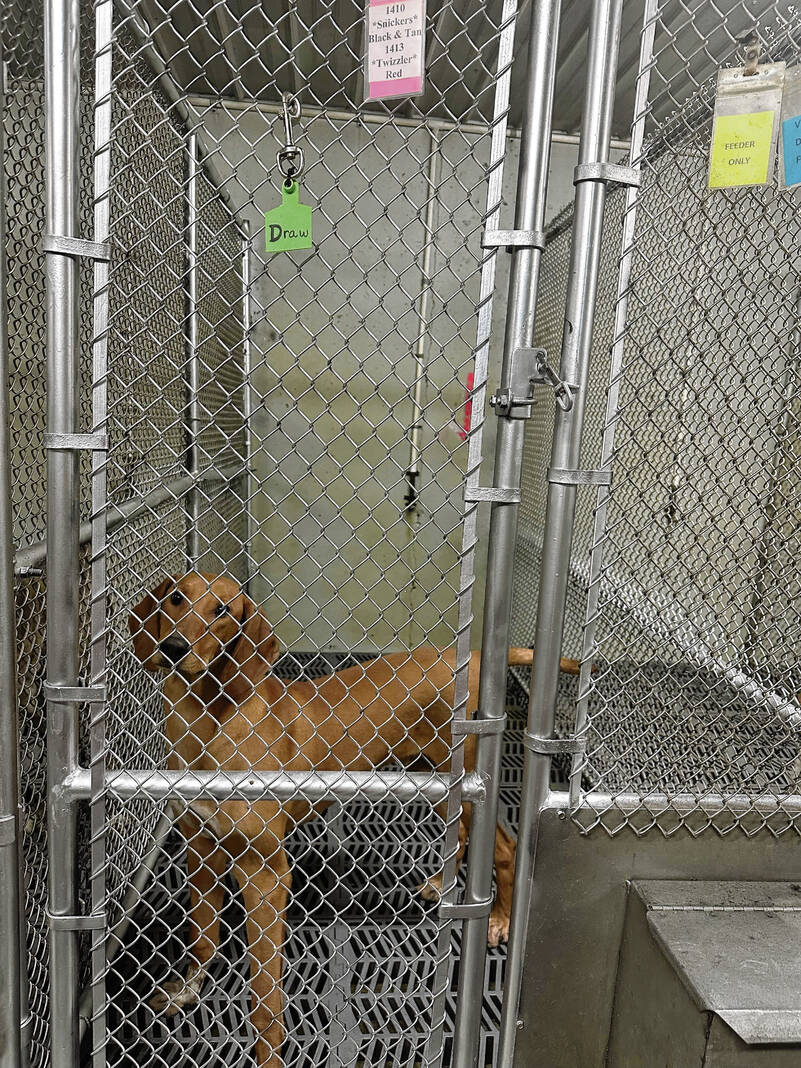
Repairs and replacements of the kennels at the facility are about 90% complete as they work to seal the areas of rust on portions of the enclosures.
Veterinarian’s Blood Bank | Ashley Rogers
The Indiana State Board of Animal Health has completed an investigation of the dog facility at The Veterinarian’s Blood Bank in Vallonia after concerns of neglect to health and management from the animal rights organization People for the Ethical Treatment of Animals, aka PETA.
The organization claims more than 900 animals are living in severely crowded pens and the company is drawing blood from animals who were elderly, sick and denied adequate veterinary care.
PETA gathered these claims during an undercover investigation over a seven-month period last year. Following the organization’s concerns to state and local officials, an investigation began Nov. 30, 2023.
The Tribune used photos provided by the Indiana State Board of Animal Health’s investigation.
Inspection
According to the case report from the Indiana State Board of Animal Health, an unannounced inspection was conducted Dec. 27, 2023, by District 8 Field Veterinarian Dr. Jodi Lovejoy. Blood Bank Director Debbie Sweany and dog facility manager Ashley Rogers also were present.
During the inspection period, approximately 340 dogs were onsite.
Dogs are all maintained in indoor-only facilities with access to outside pens for exercise and socialization separate from the primary enclosures. Multiple dogs are placed in the exercise pens once or twice a day for 15 to 30 minutes at a time with shaded shelter and water available. Color-coded tags on kennels let employees know what dogs are compatible for exercising together.
Automatic drip waterers and a feed container were present in each enclosure, and space was adequate for normal movement.
Surfaces were free of excessive rust and sharp points; however, significant rust was noted on several portions of the primary enclosures.
The flooring consisted of an open weave material, and Lovejoy noted many primary enclosures did not include a solid surface, such as a dog bed, for the animals to sit or lie down. Some enclosures had dog beds hanging on the front panel and are reportedly hung up until 2 p.m. to keep the beds cleaner. Lovejoy said some enclosures did have dog beds or other types of solid surfaces available to the dogs.
PETA claims many of the dogs developed pressure sores, growths and skin tags from being forced to lie on the hard grated floors with no bedding or resting platform for long periods of time.
According to the report, Sweany said she is working to find a style of dog bed that will provide a solid surface for the dogs, easy to clean and relatively indestructible. Boxes of dog beds were in the office at the time of the inspection, and Sweany removed one from the shipping box to show Lovejoy. Lovejoy noted the dog bed was very large, thick and well constructed.
All dogs were observed for any obvious signs of injury or illness using the Purina Dog Body Condition scoring system to determine the amount of fat and muscle a dog has. It has a range from 1.0 to 9.0 with 4.0 to 6.0 considered normal.
Most of the dog’s conditions were normal with some slightly underweight and some slightly overweight. Skin issues, such as hair loss, thickening and skin tags, were noted in multiple dogs, according to Lovejoy.
Oral health was evaluated on a scale from 0 to 4 with 4 being advanced periodontitis, which is an inflammation of tissue and bone that surround and support the teeth due to a bacterial infection. All dogs checked for dental health had moderate to severe dental scores.
Dr. Darren Bryant, veterinarian and co-owner of the blood bank, said if an animal’s dental disease progresses to the point of forming abbesses, it is likely the infection can enter the bloodstream.
“That’s one of the big concerns of why we try to stay on top of dentals,” he said. “A lot of our retired dogs, as they get older, their teeth get worse much like humans do, but we don’t draw from those animals.”
Bryant said by checking the white blood cell count of a dog and symptoms, such as fever or weight loss, before a blood draw, they can determine if there is an issue regarding dental disease, in which case blood is not drawn.
“Sometimes, you can see an animal’s high dental score, but the bloodwork doesn’t show an elevated white blood cell count,” he said. “If it’s just plaque buildup without tooth root infection, you aren’t going to get an elevated white blood cell count.”
Four dogs were randomly picked for a more detailed evaluation, all noting signs of gum irritation and plaque buildup and some with hair loss and skin tags on the sternum.
According to the report, employees were in the process of cleaning the primary enclosures at the time of the inspection. Feces were present in multiple kennels, while others did not, and the area under the kennels is reportedly flushed manually once a day.
It was noted dog bowls are cleaned but not sanitized, and Lovejoy provided a corrective action to add a sanitation process to cleaning of food bowls every two weeks.
Dogs are retired from blood draws at 10 years old and remain on the property, and puppies born on the property are retained as replacements.
Bryant said the retired dogs are available for adoption, and they do not euthanize the animals once they retire from blood donation.
“There are some that get adopted, but if we are realistic, most people don’t want a 10-year-old dog. They want a puppy,” he said. “We do have a protocol in place for adoption, but we don’t advertise it too much publicly because of incidents like this where people get the wrong idea about what we do. Also, this place has been their home for many years for a lot of the dogs, and they are well taken care of and are happy here.”
Nine people work Monday through Saturday with dogs being fed and provided treatments with a minimal workforce on Sundays.
As a registered commercial dog breeder, the focus of the inspection was to determine if the facility meets the requirements set in Indiana’s Commercial Dog Breeder Broker Program.
Concerns brought up in the complaint to the Indiana State Board of Animal Health included incompatible dogs being housed together. One situation reportedly involved an intact male dog being placed in a kennel with a female in heat, therefore making her receptive to breeding. These dogs were, however, reportedly not placed together for breeding purposes.
According to the USDA 9 Code of Federal Regulations, female dogs in heat are not to be housed with sexually mature males unless it is for breeding.
Bryant said the only time they put sexually intact male and female dogs together is for the amount of time it takes for them to breed, which he said is usually less than 24 hours.
“Our caretakers are keeping an eye on them to make sure there aren’t any issues and then they are separated,” he said.
Lovejoy noted in the report male and female dogs have separate hierarchy structure within a pack, and as a rule, male and female combinations are usually more compatible with fewer dominance issues. This only assumes that one dog or both are neutered or the caretaker will recognize when the female is beginning to enter heat and separate them for the duration.
Bryant said they don’t neuter the male dogs until they are mature, as it has been proven that a male dog neutered young has a higher chance of bone cancer.
“We let them go to about a year before we neuter them, and in some situations, they can be sexually active at that age, which then we don’t house them with a female,” he said. “For females, we usually have them spayed around five to six months of age.”
PETA made claims of dogs being placed in the exercise area that were not compatible, causing fights and injuries. During the inspection, multiple enclosures had signs indicating known compatibility issues and what steps to take to reduce the likelihood of a confrontation between noncompatible dogs.
According to the report, however, it is unknown if the signs were in place at the time of the incidents mentioned in the complaint or if instructions were being followed at the time of the relayed incidents.
Lovejoy noted dogs were outside in the exercise pens during inspection, and there were no dog-on-dog issues. Rogers said in the report she had been trying to acclimate two female dogs together to eventually be able to co-house them.
Rogers said she is doing so through a slow introduction with the two females living in separate enclosures next to each other.
Blood draws
According to the report, 450 ml of blood is collected every 19 to 21 days, or every three weeks. Dogs are reportedly weighed and have their temperature checked before blood collection. If the dog has a fever, weight loss or wounds, blood is not drawn.
It was noted complete blood counts and a full chemistry panel are checked once per year and hematocrit is checked twice per year.
The Veterinarian’s Blood Bank is reportedly moving from using pure-bred Greyhounds to Greyhound crosses because the crossbred dogs have a stockier body style and appear to have more subcutaneous fat than purebred Greyhounds. Subcutaneous fat is located under the skin of animals that protects from trauma, insulates the body and serves as a reserve source of energy.
Also, it appeared the crossbreds were not as affected by skin issues as the purebred Greyhounds.
“We buy coonhounds from a company in southern Illinois that raises them for research purposes, and we crossbreed them with our Greyhounds,” Bryant said. “They have less dental issues, a stockier body style and better leg structure.”
Findings
Lovejoy noted at the end of the inspection the dogs owned by the blood bank were in or near normal body condition with adequate food, water and shelter.
Some of the issues noted in the inspection included significant dental issues, skin injuries, lack of solid flooring and areas of rust on primary enclosures.
Lovejoy provided corrective actions in writing to co-owner Dr. Ron Harrison that included providing dental care for dogs with a dental score of 2 or higher, providing bedding to all dogs for resting within three weeks and sealing areas of rust in dogs’ enclosures within four weeks.
Bryant said since the inspection, they have made a variety of improvements to the issues noted. Rogers provided photos of improvements they have made so far.
“We now have solid surface flooring for every pen that we have, and it’s something the dogs won’t tear up easily,” Bryant said.
He said staff has been replacing some of the enclosures that had areas of rust and is about 90% complete with that process.
“There were no sharp edges or anything like that on the pens,” he said. “Her (Lovejoy) point was that it is more difficult to clean and disinfect with the rust on there.”
Bryant said the facility has two dental machines and can perform between 12 and 16 dental procedures a week depending on staff.
“We have taken care of a majority of those animals with dental issues and have been pleased with how that’s going,” he said.
A follow-up inspection is said to be conducted after the time frames listed in the corrective actions.
Bryant said ever since the COVID-19 pandemic, the facility struggled to maintain staff, and since then, they have been working diligently to make improvements.
“The amount of effort we’ve got with people willing to work overtime to get things back on track has been really good,” he said.
